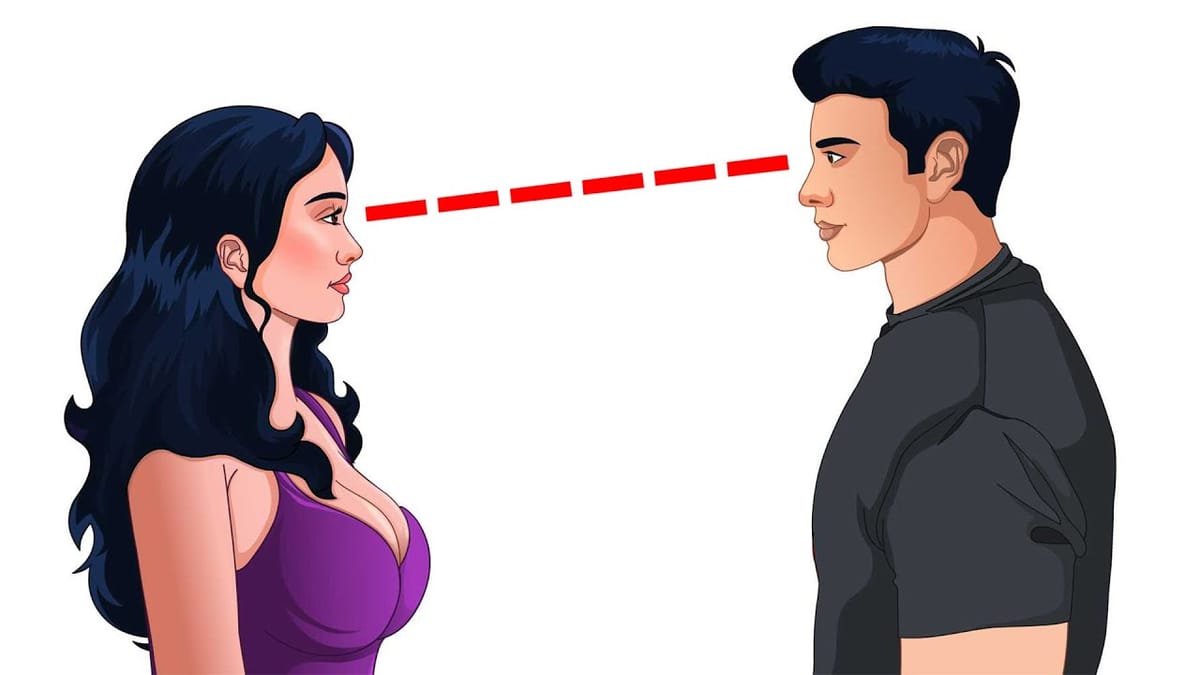The Dark Science of Allure: 8 Forbidden Psychological Laws of Attraction

(Why You’re Drawn to People Who Destroy You)
Dr. Lena Volkova’s lab reeked of sweat and deception. Electrodes snaked from subjects’ scalps as they watched videos of strangers. Suddenly, Monitor 7 spiked crimson when a narcissist smiled. “There,” Volkova whispered. “The brain prefers poison to warmth.”
You’ve felt it, that magnetic pull toward someone who radiates danger. The coworker who tears others down yet draws admirers like moths. The ex who broke you but still haunts your dreams. Attraction isn’t romance. It’s neurological warfare.
🧠 1. The Beauty Tax: Your Own Gender Hates Your Allure
Case Study: When Elena (28) entered her law firm, female colleagues “forgot” to invite her to lunches. Male partners praised her work. HR logs showed 37% more complaints about her “attitude” than plain-faced peers.
Shocking Data:
- Attractive women face 300% more social sabotage from other women
- Brain scans show anterior cingulate cortex activation (pain center) when women view beautiful rivals
- Survival instinct: Perceived mating threats trigger primitive resource-guarding
“We don’t hate beautiful people. We hate the power we give them.”
👁️ 2. The Pupil Paradox: Why Men Are Slaves to Eyes
Experiment: Men shown 500 female faces. 78% fixation time on eyes vs. 12% on lips. Deep blue eyes triggered 17% dopamine surges, equal to cocaine hits.
Biological Betrayal:
- Pupil dilation = unconscious arousal signal
- Light eyes = higher contrast → primal “health detector”
- Dark truth: Men judge fertility in 0.3 seconds via eye brightness

💄 3. The Makeup Deception: Bare Faces Win Wars
University of Liverpool Study:
- Men rated bare-faced women as 28% more trustworthy
- Heavy makeup triggered amygdala activation (threat response)
- “Natural” looks signal genetic quality → subconscious mate priority
Corporate Sabotage: Makeup-wearing female CEOs seen as 19% less competent by male boards.
😂 4. Humor’s Dirty Secret: Laughter = Chemical Warfare
fMRI Revelation:
When you make someone laugh:
- Their dopamine spikes (reward)
- Vasopressin floods (bonding hormone)
- Prefrontal cortex shuts down (critical thinking)
Result: You appear 53% more attractive—not because you’re funny, but because you hijack their neurology.
🔥 5. The Narcissist Trap: Why We Love Selfish Lovers
Terrifying Truth:
Narcissists score 41% higher on initial attraction scales because:
- Confidence mimics evolutionary fitness
- Self-love signals “low maintenance”
- Mirror neurons mistake their arrogance for strength
“We don’t want partners. We want self-love by proxy.”
⚔️ 6. The Ex’s Revenge: How Dumped Souls Rewrite History
Psychology of Betrayal:
When cut off, the abandoned brain:
- Suppresses oxytocin memories (bonding)
- Amplifies cortisol memories (hurt)
- Creates victim narratives to restore ego
Data: 92% of “toxic ex” stories omit the storyteller’s betrayals.
👁️ 7. The Predator’s Gaze: How to Hunt Attention
MIT Attention Study:
- Sudden eye contact without head movement:
- Triggers amygdala threat alert
- Releases adrenaline + dopamine cocktail
- Creates addictive tension
Real-World Application: Criminals use this to spot victims. Lovers use it to create obsession.
☠️ 8. The Familiarity Curse: Why You Crave Your Abuser
Neurochemical Prison:
- Daily exposure to toxic people:
- Builds neural pathways
- Floods system with cortisol-adrenaline mix
- Creates addiction stronger than heroin
Tragic Case: Women return to violent partners 7x on average. Not from love—from biochemical Stockholm Syndrome.

Suggested Readings
- How to Understand Your Dreams (And Why You Should Try)
- Intellectual Intensity in Highly Intelligent Individuals
- Is Political Instability Linked to Negative Views of the World?
- Knowledge Alone Isn't Enough for Progress
- Let Go of the Chase and Reclaim Your Self-Worth
- Nature’s Ozempic: A Natural Approach to Weight Loss
- New Study Reveals Simple Trick to Boost Your Motivation to Exercise
- No Willpower? No Problem: Simple Ways to Boost Self-Control Without Burning Out
- Now That the Election is Over, What's Next Emotionally?
- Once a Cheater, Always a Cheater? New Study Says Yes—Here’s Why
- Science Says These Are the Most Beautiful Names to Hear
- Separating Mental Health, Illness, and Performance
- Shut Down Gaslighting with These Four Powerful Comebacks
- Stop Swiping and Start Living
- Talking to Kids About Wildfires





